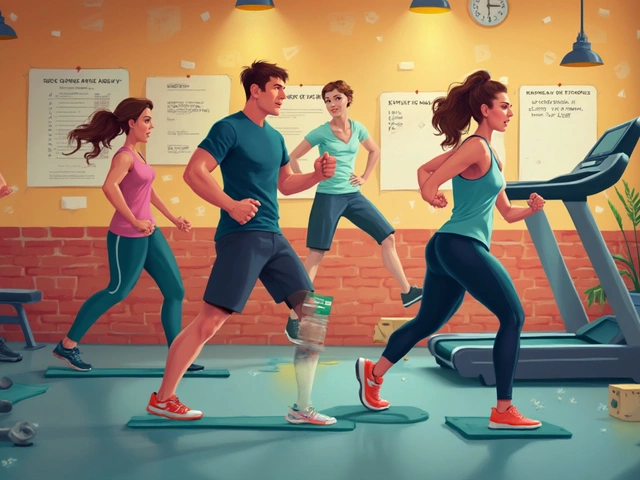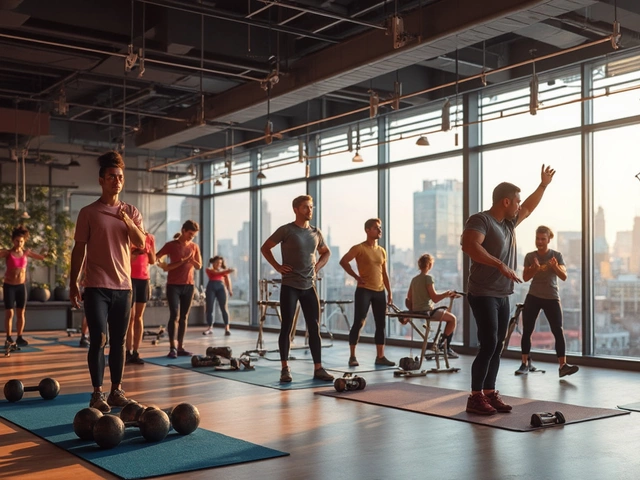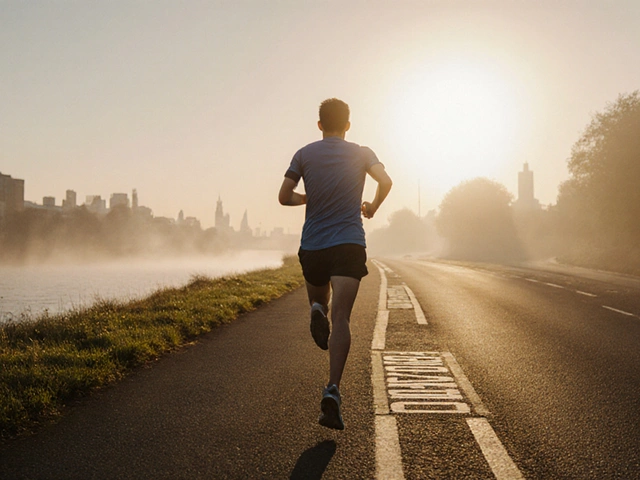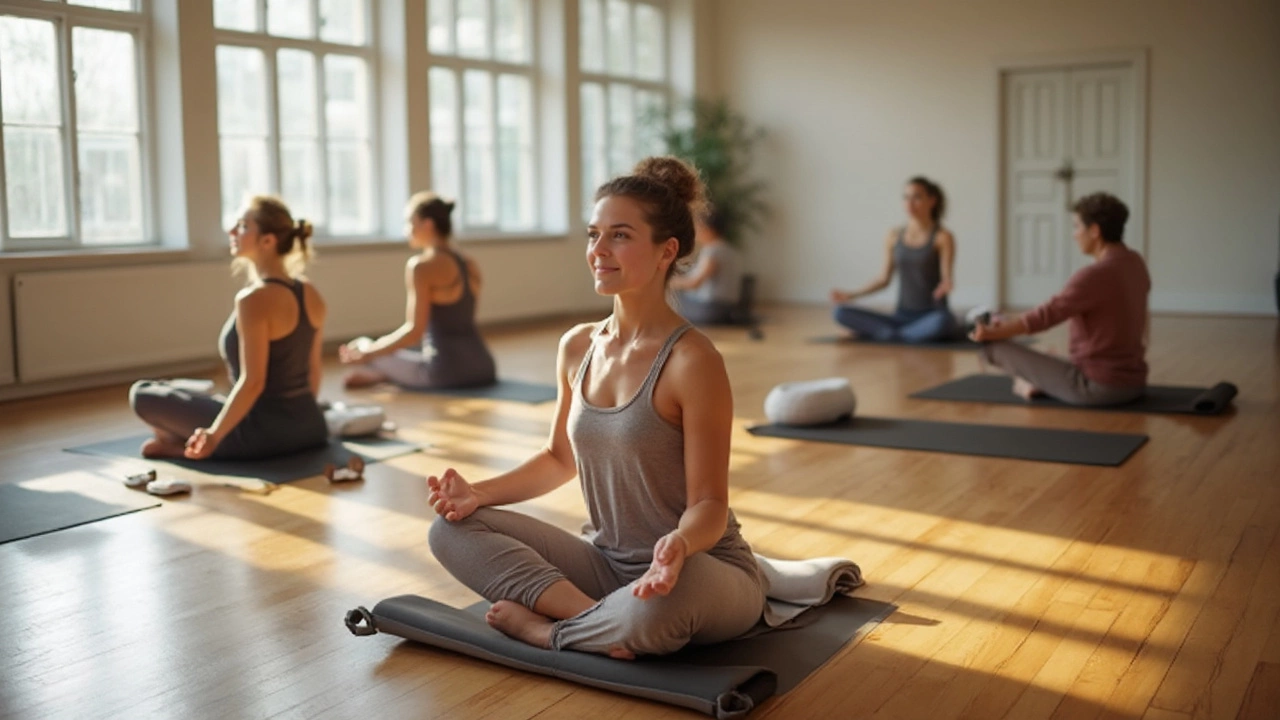
Fitness April 27, 2025
Yoga or Pilates: Which Is Better for You?
So, you’re standing there scratching your head, wondering if you should book a yoga class or sign up for Pilates. You hear people swear by both, but how do you know which one will click with your lifestyle, your goals, or even your cranky lower back?
First thing to know: Yoga and Pilates are not twins. Sure, both involve mats, stretching, and some deep breathing, but their roots and routines are pretty different. Yoga’s been around for thousands of years, focusing on flexibility, breathing, and a touch of mental clarity. Pilates is the newer kid on the block, laser-focused on building core strength and stability.
Let’s cut through the confusion before you spend money on classes or a new mat. I’ll lay out real differences, spill on what you really get from each, and share tips so you don’t end up bored—or worse, sidelined with an injury. Ready to clear things up?
- Spotting the Differences
- Who Should Try Yoga?
- Who Should Try Pilates?
- Fact-Checking the Benefits
- How to Choose: Honest Tips
Spotting the Differences
Alright, let's get down to real talk on yoga and Pilates. They look similar from the outside—mats, stretchy pants, slow moves—but they play in different leagues when it comes to origin and what they target in your workout.
Yoga comes from ancient India, going back over 2,000 years. It's more than just a workout; it's a full-body and mind practice. You’ll see lots of poses (asana), deep breathing (pranayama), and some meditation tossed in the mix. Pilates, on the flip side, was created by Joseph Pilates in Germany during the early 20th century. It’s all about precision, controlled movements, and firing up your core muscles.
Here’s a quick breakdown of what you really get in each class, because sometimes the details matter:
| Feature | Yoga | Pilates |
|---|---|---|
| Origin | India, 2,000+ years ago | Germany, 1920s |
| Main Focus | Flexibility, breath, mindfulness | Core strength, stability, alignment |
| Movements | Flows, holds, deep stretches | Small, precise, often with equipment |
| Mind-Body Element | High (meditation, breathing techniques) | Moderate (focus is technical, some breathing) |
Pilates fans love the fact that classes usually move faster, keep things repetitive, and often involve gear—like reformers, rings, or resistance bands. Yoga is typically mat-based (unless you get wild with aerial or hot yoga), and has more of those moments where you stop and breathe.
One key thing? Yoga classes can be very chill (think gentle Yin or restorative styles) or leave you dripping in sweat (hot yoga, power flow). Pilates classes usually stick with shorter reps and a steady pace, and they hammer your abs and back muscles hard. Both low-impact, but Pilates is especially liked for post-rehab stuff and fixing posture.
“Yoga is the journey of the self, through the self, to the self,” the Bhagavad Gita says. Joseph Pilates famously said, “Physical fitness is the first requisite of happiness.” Pretty different vibes, right?
If you want to zone out and chill while getting bendy, yoga is your friend. If you want to nail a strong, stable core and stand taller, Pilates is probably your game. Both styles work for beginners—all you need is a willingness to try and maybe, at first, laugh at yourself when you wobble. Perfectly normal!
Who Should Try Yoga?
If you’re looking for a practice that mixes movement, breathing, and some serious chill time, yoga is a solid choice. People love it for different reasons. Some get into it to loosen stiff muscles, others use it to dial down stress after work. Yoga isn’t just about touching your toes—it’s about noticing how you feel, inside and out.
One cool fact: research from Johns Hopkins shows that practicing yoga just a couple of times a week can ease arthritis symptoms, help with chronic back pain, and boost your mood. And it’s not just for super-fit folks—there’s a style for every age and body type, from gentle restorative classes to sweatier vinyasa sessions.
- Stress management: If work or life is always cranking up your anxiety, yoga gives you tools to breathe slower, lower your blood pressure, and keep your cool. Even a 10-minute stretch session on a lunch break can make a difference.
- Flexibility: Want to tie your shoes without groaning? Regular yoga makes your muscles and joints move easier and hurts less—no acrobatics needed.
- Balance and focus: The slow, controlled moves and deep breaths help boost your concentration and body awareness. This comes in handy if you’re juggling family, work deadlines, or sports.
- Recovery and rehab: Folks coming back from injury or with physical limitations often find gentle yoga helps with healing, without pushing too hard.
Now, not every style is for everyone. If you have a medical issue, you’ll want to check in with your doctor or the instructor first. And if you’re just starting out, look for “beginner” or “gentle” classes—you don’t have to twist yourself into a pretzel to get the benefits.
| Top Benefits of Yoga | Who It Helps Most |
|---|---|
| Stress Reduction | Busy professionals, parents, students |
| Pain Relief | People with arthritis, back issues |
| Flexibility & Mobility | Athletes, older adults, office workers |
| Mental Wellbeing | Anyone facing anxiety or burnout |
Bottom line: if you want something that’s good for both body and mind, yoga is open to just about anyone. You don’t need expensive gear—just comfy clothes and a mat.
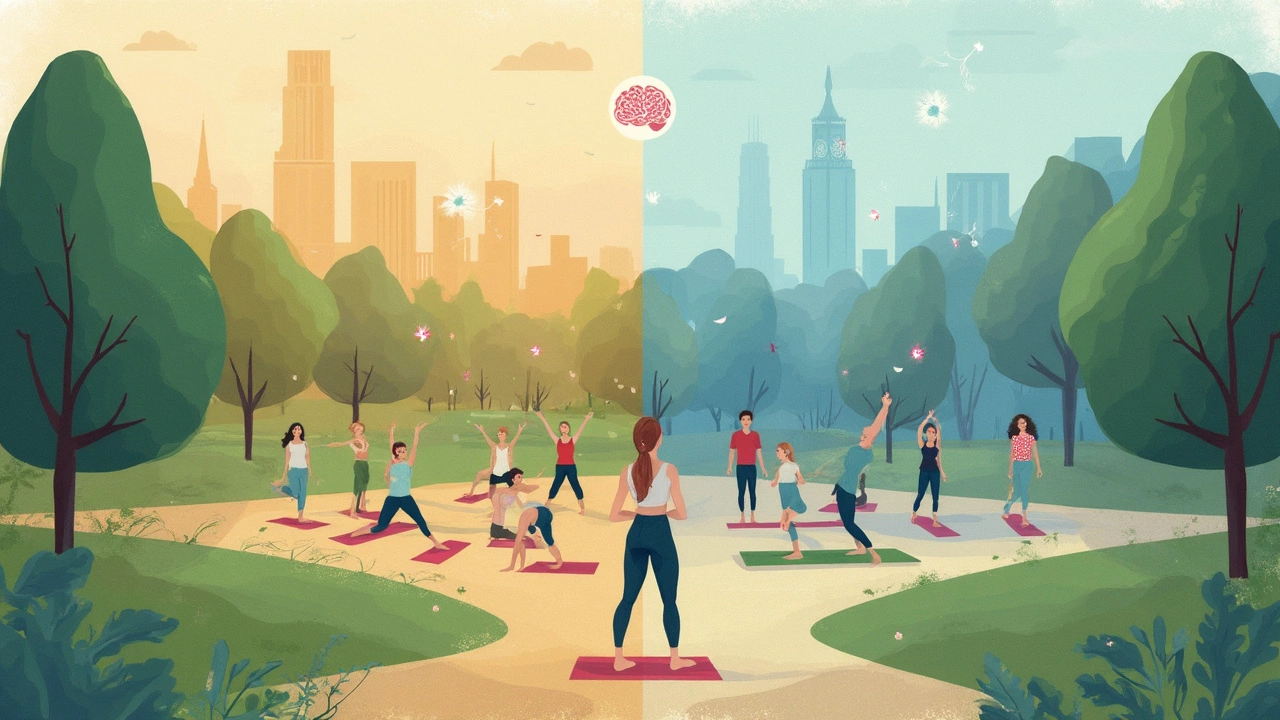
Who Should Try Pilates?
If you’re someone looking for stronger core muscles, better posture, or relief from nagging back pain, Pilates should be on your radar. Unlike workouts that just torch calories or max out your cardio, Pilates goes after the deep muscles in your belly, hips, and back—the spots that keep you upright and moving well in daily life. It’s popular among folks recovering from injuries, athletes looking for an edge, or just regular people who sit a lot and need to undo years of office-chair slouching.
Pilates is also super customizable. Whether you’re a rock climber, a new mom, or someone managing joint pain, instructors can change up exercises to fit your needs. You don’t have to be flexible or fit to start. In fact, lots of beginners walk in with no clue and leave feeling taller and steadier on their feet. Plus, the risk of injury is low, since every movement is about control and quality, not speed or brute strength.
"One of Pilates' big draws is how it strengthens the core without putting strain on the joints, making it an ideal choice for almost any age or fitness level," says Rael Isacowitz, founder of BASI Pilates.
Many physical therapists use Pilates with clients dealing with bad backs or post-surgery recovery. Studies from places like the National Institutes of Health show that people with chronic low back pain usually see improvement with regular Pilates sessions.
| Who Benefits Most | Why |
|---|---|
| People with poor posture | Improves alignment and awareness |
| Those with chronic low back pain | Strengthens deep support muscles |
| Athletes | Enhances performance and stability |
| Older adults | Low-impact, joint-friendly |
If you want workouts you can do at home with just a mat, you’re in luck. Tons of online videos will guide you. But if you ever feel lost, a certified instructor is worth every penny—especially for learning good technique right away. If words like “energy leak” or “powerhouse” pop up, don’t stress. They’re just talking about finding strength from your core so everyday movements feel easy.
Fact-Checking the Benefits
There’s no shortage of claims about yoga and Pilates. Some sound almost magical, but let’s be real: not every benefit is backed by solid evidence.
Yoga is famous for improving flexibility. No surprise there—countless studies show that a regular yoga practice helps loosen tight muscles. It also helps with balance and coordination. But what about mental health? Research shows that folks who stick to yoga often report feeling less stressed and sleeping a bit better. A 2023 review in the Journal of Clinical Sleep Medicine found people with insomnia fell asleep faster and felt more rested after a few weeks of yoga classes.
Now switch to Pilates. Its main pitch is building core strength, and that’s spot on. If you want a strong midsection (or you’re tired of nagging lower back pain), Pilates delivers. Studies have found that even just eight weeks of steady Pilates can boost your core stability, which helps with pretty much everything you do—from sitting at a desk to playing weekend sports.
Here’s a quick comparison of some of the science-backed perks
| Benefit | Yoga | Pilates |
|---|---|---|
| Flexibility | Yes | Moderate |
| Core Strength | Some | Yes |
| Stress Relief | Strong Evidence | Some |
| Injury Rehab | Helpful | Often Recommended |
People love to ask, "Will yoga or Pilates help me lose weight?" The truth: neither burns as many calories as a hard cardio session, but when done steady and paired with a sensible diet, both can nudge the scale downward a bit. More importantly, both help you move better and feel more comfortable in your skin.
- Yoga is great if you want less stress, better focus, and more flexibility.
- Pilates is amazing if your main goal is core strength, better posture, and back protection.
- Both help with injury recovery, but Pilates is especially big in rehab clinics thanks to its focus on controlled, low-impact moves.
So, before you believe wild claims about instant results or miracle makeovers, remember the truth is impressive enough: both yoga and Pilates pack a punch when it comes to long-term health and feeling good every day.
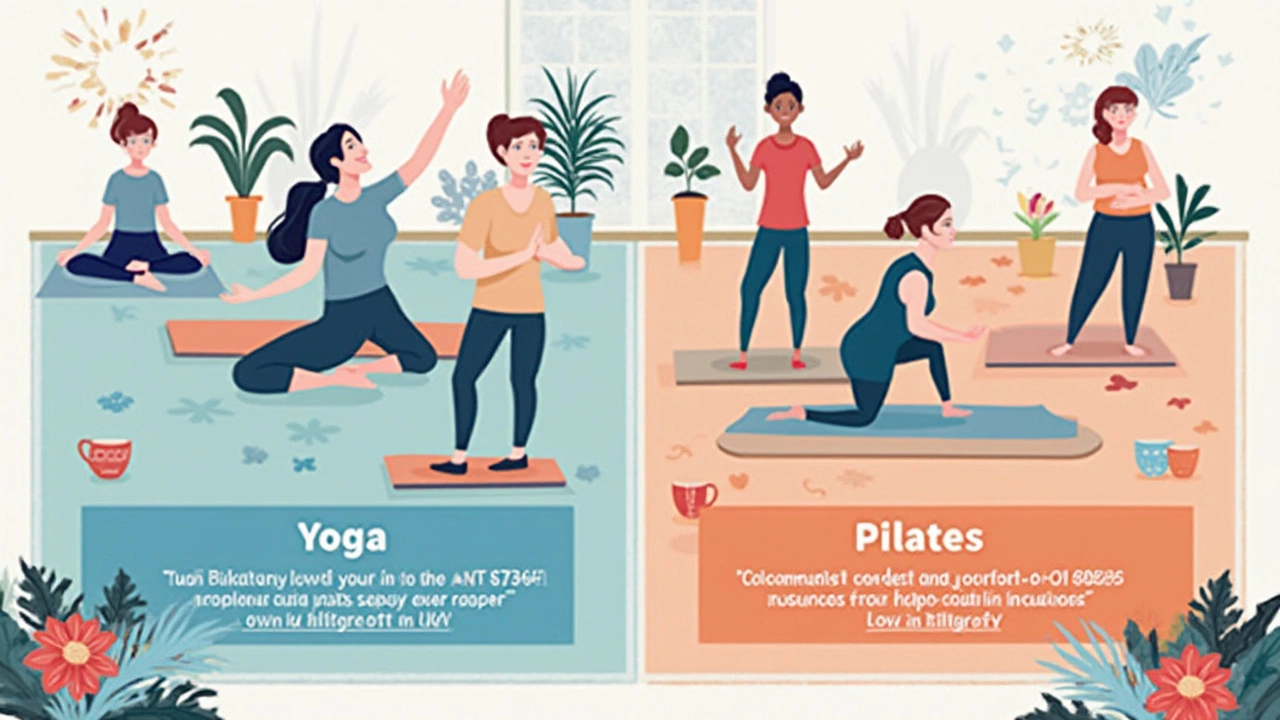
How to Choose: Honest Tips
This isn’t about picking a side in the age-old yoga versus Pilates showdown. It’s about finding what actually clicks for YOU. So how do you decide? Break it down by your needs, your schedule, and what gets you fired up or relaxed.
Ask yourself these questions before you sign up:
- What’s your main goal? If you want to de-stress, get flexible, and quiet your mind, yoga’s your best friend. If you want a killer core and better posture, Pilates is the way to go.
- Do you have injuries or pain? Pilates often works wonders for back pain since it hones in on stabilizing your core. But if you’re stiff and need gentler stretching, some yoga types—like restorative or gentle yoga—can help.
- How do you like to move? Need calm and chill? Go for yoga. Prefer steady, targeted moves? Try Pilates mats or reformer classes.
- What’s available near you? Search your local studios and gyms. Sometimes, the decision comes down to where you can actually get a spot that fits your routine.
If you’re still torn, consider trying a starter class in both. Most places offer first-timer deals or free trial sessions. Trust me, nothing beats sampling each to get the real vibe.
| Yoga | Pilates |
|---|---|
| Great for flexibility & calm | Great for core & posture |
| Many class styles—from power flow to chill yin | Clear structure and short sets |
| Can reduce everyday stress | Can ease certain long-term aches |
One more tip: don’t stress over picking the "right" one forever. Mix it up if you want. I know people (Grace included) who switch back and forth based on what life throws at them that week. There's no rule saying you can't do both.
Bottom line—try, tweak, and adjust until you land on what feels good and keeps you going. That’s the real win here.

